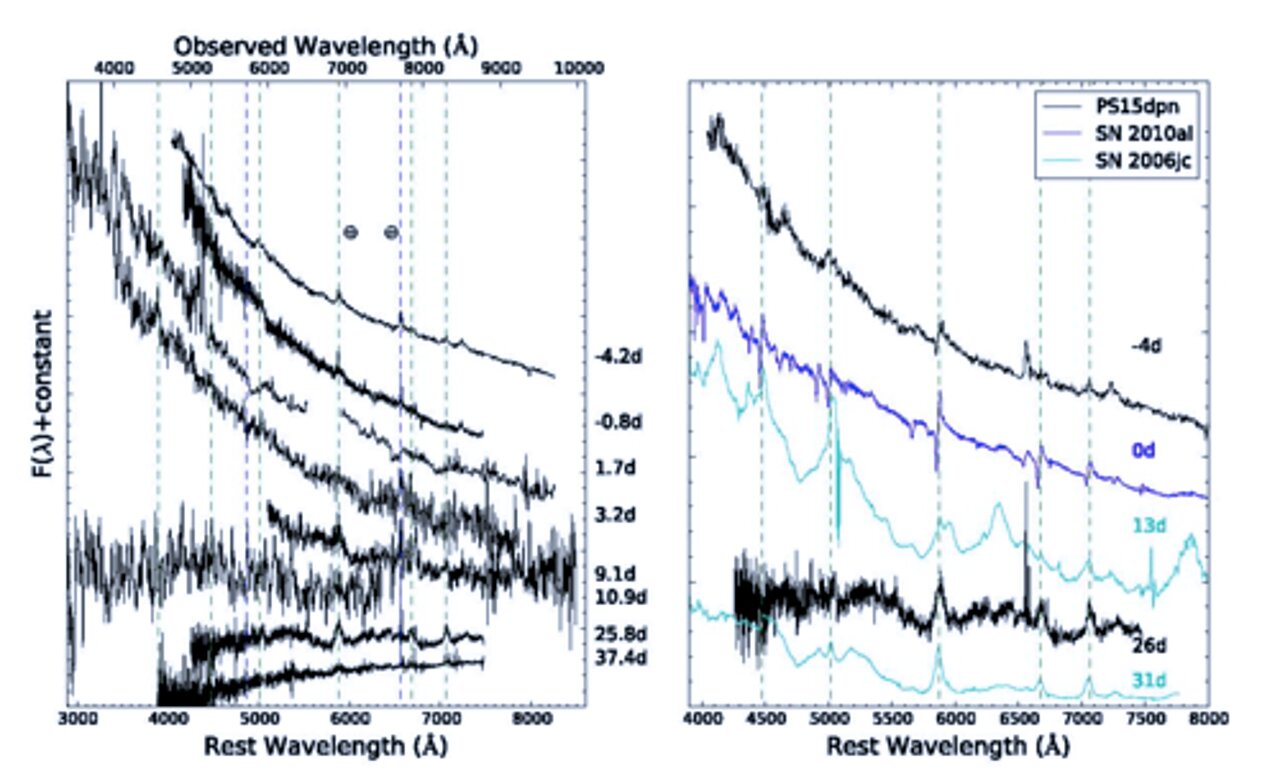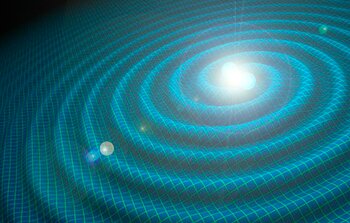Could Gravitational Wave Events Flash in Visible Light?
August 16, 2016

Gemini explores the possibility of short-lived optical emission (visible light) from the violent events that produce gravitational waves.
Even before the announcement of the first gravitational wave detection by the Laser Interferometer Gravitational-Wave Observatory (LIGO) in February of this year, theorists wondered if the extreme energy required to produce strong gravitational waves might also produce a detectable optical flash.
Currently the most widely accepted explanation for gravitational wave events is the collision of black holes. The impact would send gravitational waves rippling through space at the speed of light. Thanks to LIGO the existence of gravitational waves is now confirmed, but unknown is the extent to which they might be accompanied by the emission of optical light or radiation at higher energies such as x-ray or gamma-rays.
A recent study headed by Stephen Smartt at Queen’s University in Belfast and Ken Chambers from University of Hawai‘i could help answer this question. “We were looking for the proverbial needle in the haystack,” says Chambers. “The area of sky was about 290 square degrees, and while we found several potential sources, in the end none could be associated with the LIGO discovery source.” Smartt adds that the coordination of observations between wide-field telescopes like Pan-STARRS1 and deep spectroscopic follow-ups with Gemini were critical to the research which ultimately proved the concept for future gravitational wave events. “With this effort we’ve demonstrated that we can tile out the big sky area that LIGO thinks the source originated, find anything that is transient or variable to quite deep limits and then trigger a range of other powerful facilities like Gemini,” said Smartt. “It’s a big team project and I’m very excited about it’s potential. We have the tools to discover the sources in the next couple of years.”
The paper, titled: “A Search for an Optical Counterpart to the Gravitational Wave Event GW151226” has been accepted for publication in The Astrophysical Journal Letters.
The Gemini Observatory followup observations – to provide spectroscopic classifications of transient sources – were made with the Gemini Multi-Object Spectrograph (GMOS) on the Gemini North telescope on Maunakea in Hawai‘i. One interesting source is a supernova that occurred at roughly the same time as (within a few days of) the gravitational wave source, but it is too distant to be the counterpart. Data were also provided by Pan-STARRS1, the University of Hawai‘i’s 2.2-meter telescope, the ATLAS survey telescope, the Public ESO Spectroscopic Survey of Transient Objects (PESSTO), and an additional observation using the Hubble Space Telescope.
Paper Abstract
We present a search for an electromagnetic counterpart of the gravitational wave source GW151226. Using the Pan-STARRS1 telescope we mapped out 290 square degrees in the optical iP1 filter starting 11.5hr after the LIGO information release and lasting for a further 28 days. The first observations started 49.5hr after the time of the GW151226 detection. We typically reached sensitivity limits of iP1 = 20.3 ± 20.8 and covered 26.5% of the LIGO probability skymap. We supplemented this with ATLAS survey data, reaching 31% of the probability region to shallower depths of m≅19. We found 49 extragalactic transients (that are not obviously AGN), including a faint transient in a galaxy at 7Mpc (a luminous blue variable outburst) plus a rapidly decaying M-dwarf flare. Spectral classification of 20 other transient events showed them all to be supernovae. We found an unusual transient, PS15dpn, with an explosion date temporally coincident with GW151226 which evolved into a type Ibn supernova. The redshift of the transient is secure at z=0.1747 ± 0.0001 and we find it unlikely to be linked, since the luminosity distance has a negligible probability of being consistent with that of GW151226. In the 290 square degrees surveyed we therefore do not find a likely counterpart. However we show that our survey strategy would be sensitive to NS-NS mergers producing kilonovae at D ≤ 100 Mpc which is promising for future LIGO/Virgo searches.

